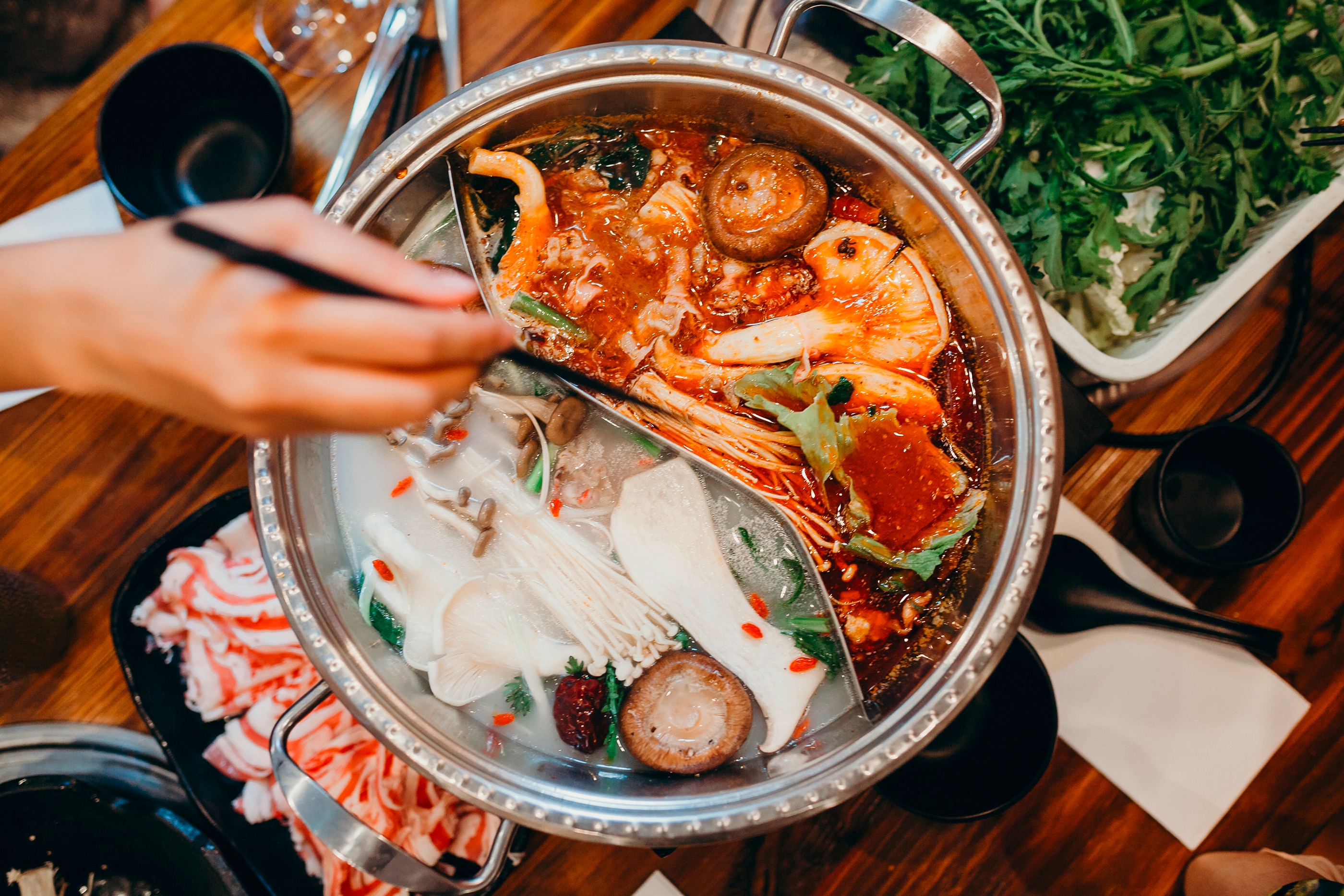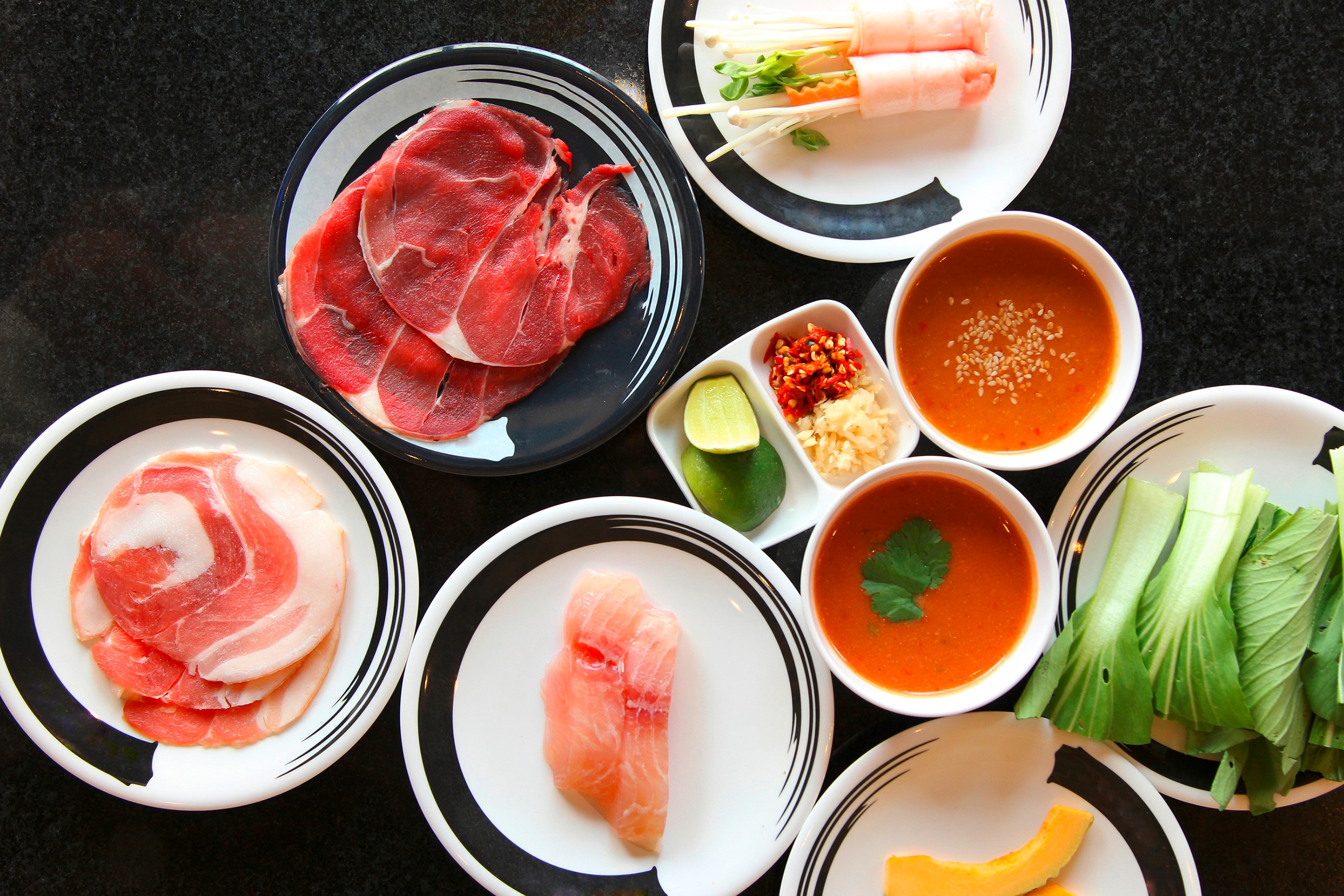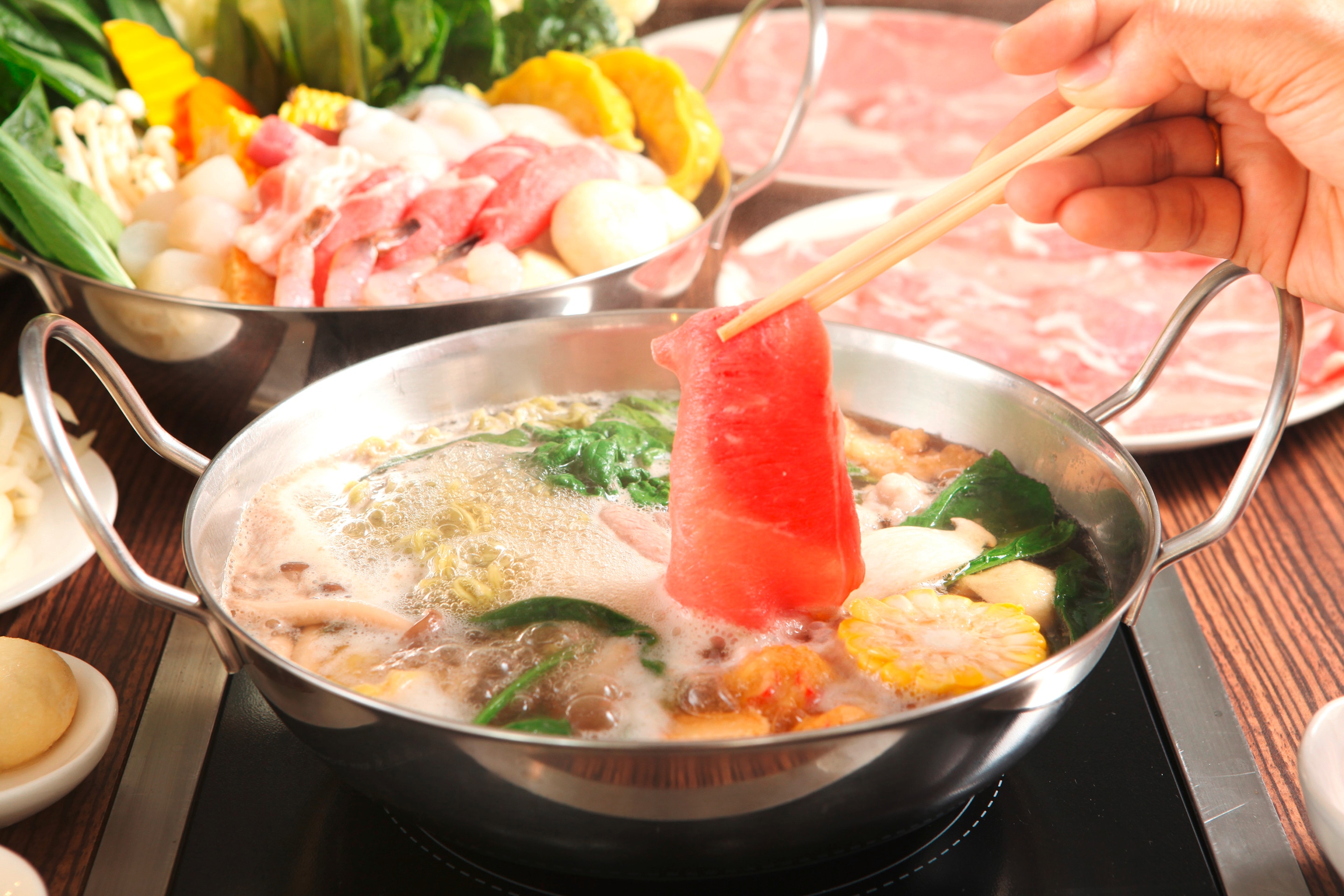Skip to:
When eating with friends or family, choosing dishes can be as tricky as finishing a puzzle. Some might want meat and seafood, while others prefer noodles and vegetables. But what’s a dish that offers all that? Shabu shabu! Here, everyone at the table can cook, customize the ingredients, and get creative with their dipping sauces.
But your quest to find that perfect communal dish is not over yet. Ever wonder why some hot pot restaurants have different labels? How do their soups differ? Read on to find out!
Different Types of Hot Pot

Hot pot or steamboat is an umbrella term for dishes made in a cauldron of broth and served with dipping sauces. The ancient Chinese came up with the brilliant choose-your-own-adventure dish approximately 1,000 years ago. It evolved into many iterations, such as the Japanese shabu shabu and sukiyaki.
You're not the odd one out if you've assumed these three dishes to be the same. Basically, their similarities and differences are as identifiable as gyoza vs. dumplings.
Shabu shabu
The unique name comes from the swishing sound of meat during cooking. That's right – you're supposed to swish your protein in the broth for 10-15 seconds until it changes color. This method highlights the natural flavor of the ingredients.
The broth is typically light and clear, using kelp seaweed as the soup base. But its taste is far from boring. You can play around with the dipping sauces, like the citrusy ponzu or creamy goma – a mix of sesame sauce, garlic, and soy sauce.
As for shabu shabu ingredients, there are no specific rules to them. Most people enjoy adding shiitake and enoki mushrooms, udon noodles, tofu, vegetables, and thinly sliced beef or pork as the main star.
Sukiyaki
Another Japanese hot pot is sukiyaki, which follows a specific procedure. The dish requires preparing brown dashi made with soy sauce and sugar. Add oil to a pot and stir-fry thin slices of beef or pork, vegetables, mushrooms, shirataki noodles, tofu, and green onions.
This method doesn’t require cooking the raw ingredients in the broth. Once the beef turns slightly brown, pour the broth and simmer until cooked. Upon serving, you can dip each ingredient in beaten raw eggs before eating. The salty-sweet flavor from the dashi mellows once the meat and vegetables touch the creamy egg sauce.
Hot pot
Chinese hot pot features heartier broths, like the numbing Szechuan or the flavor-bomb three combination soup. Here, you can throw all ingredients into the soup and let it simmer until fully cooked. Once done, turn off the stove and fish out what you want to eat.
The more ingredients you put in the broth, the more flavorful it will become. Mainstream hot pot recipes usually consist of some proteins (beef, chicken, lamb, and shellfish), leafy vegetables, meatballs or fish balls, noodles, and fried tofu skin.
Tips to Enjoy Shabu Shabu at Home

Craving Japanese-style hot pot? You don't need to go out or even splurge on DIY kits. You only need a portable stove and a short trip to a grocery store.
1. Get the gear ready.
Traditional shabu shabu recipes require using a clay pot that keeps ingredients warm and prevents them from being overcooked. A Dutch oven or any large pot will do if you don't have a clay pot.
Don't forget to prep all the ingredients beforehand. Buy pre-sliced meat to save you some time. But remember to avoid marinated meat. Pork belly, rib steaks, and sirloin are popular choices. Then, chop the vegetables into bite-sized pieces so they cook much quicker.
2. Make the soup base.
It might be challenging to get your hands on some kelp seaweed. Try Knorr Shrimp Cubes to achieve a similar profile. Start with this recipe.
Ingredients:
- 1½ liter water
- 3 ginger slices
- 1 pc Knorr Shrimp Cube
- 1 tbsp soy sauce
- 1 tbsp fried onions
- 1 tbsp fried garlic
- 1 tbsp ground black pepper
- 1 tbsp ground white pepper
- 1 tbsp salt
- ¼ cup mirin
Method:
- Bring the water to a boil, then add ginger.
- Add Knorr Shrimp Cube and mix until fully dissolved.
- Add remaining ingredients and boil.
3. Prepare a dipping sauce.
The dipping sauce breathes life into this dish. It should have a strong flavor to match the subtleness of the broth. Try this peanut dipping sauce recipe!
Ingredients:
- 1 tbsp olive oil
- 1 clove garlic, minced
- 4 tbsp peanut butter
- 2 tbsp hoisin sauce
- 2 tbsp Knorr Liquid Seasoning
- ½ cup chicken stock
- ½ tsp crushed roasted cashews
Method:
- Heat oil in a pan. Sauté garlic until fragrant.
- Add peanut butter, hoisin sauce, Knorr Liquid Seasoning, and chicken stock. Cook until thick.
- Transfer sauce to a small bowl. Top with cashews.
4. Start swishing.
Start adding your ingredients to the boiling broth. Harder veg, like squash and carrots, should go in first as they need a longer time to cook. Next, focus your attention on the meat. Swish a piece lightly into the broth until it turns brown. Dip in sauce and enjoy! Don't overcrowd the pot by swishing two or more slices of meat at once.
Be adventurous and explore many ways to enjoy shabu shabu with your loved ones. You can serve it with a bowl of rice for a satisfying meal. If you have many leftovers for round two, keep them in the freezer. You can also repurpose the meat and veggies for other exciting dishes, such as bibimbap and pancit canton.

